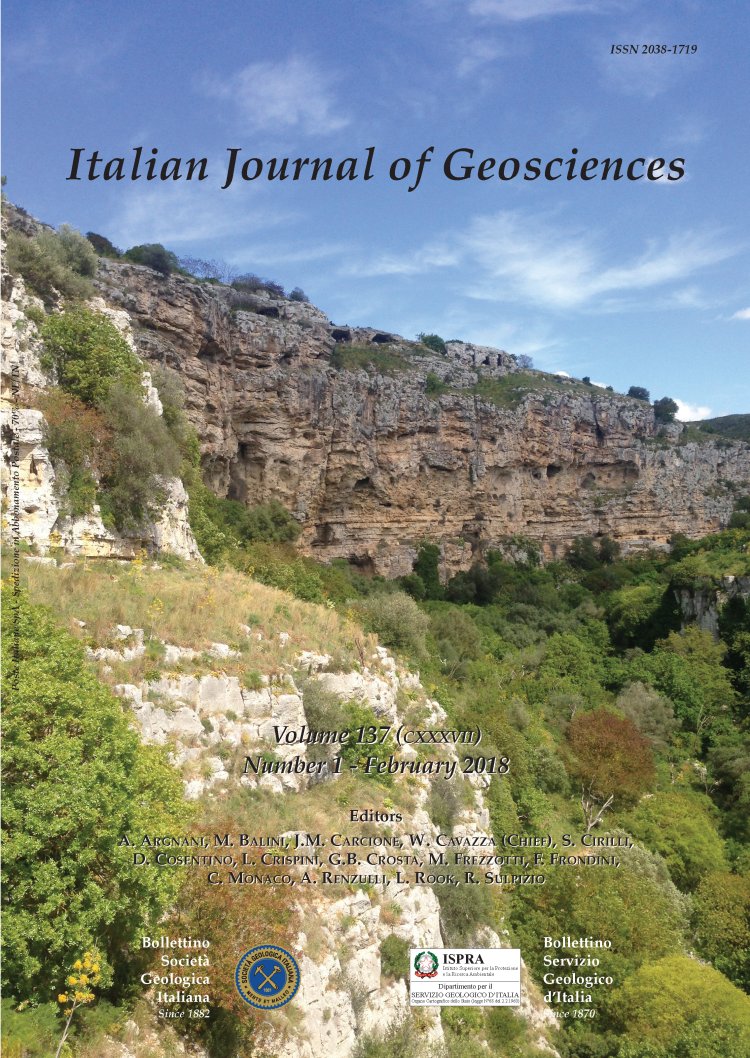
The Late Pleistocene Canis lupus (Canidae, Mammalia) from Avetrana (Apulia, Italy): reappraisal and new insights on the European glacial wolves
Beniamino Mecozzi (*,**) & Saverio Bartolini Lucenti (***,****)
(*) Dipartimento di Scienze della Terra, Sapienza Università di Roma, Piazzale Aldo Moro 5, I-00185 Roma, Italy. (**) PaleoFactory, Sapienza Università di Roma, Piazzale Aldo Moro 5, I-00185 Roma, Italy; beniamino.mecozzi@uniroma1.it. (***) Dottorato di Ricerca in Scienze della Terra, Università di Pisa, Via S. Maria 53, 56126 Pisa, Italy. Corresponding author e-mail: saverio.bartolini@dst.unipi.it. (****) Dipartimento di Scienze della Terra, Università di Firenze, Via G. La Pira 4, 50121 Firenze, Italy.
Volume: 137 (2018) f.1
Pages: 138-150
Abstract
The modern wolf, Canis lupus Linnaeus, 1758, has one of the largest ranges amongst carnivorans, and for this reason it shows local and regional differences for adaptation to a great variety of habitats, ranging from the arctic tundra to the Arabian desert. These differences are particularly evident as wolves follow the Bergmann's ecogeographical rule, with low latitude populations being generally smaller than those living at high latitudes. The fossil record of the modern wolf dates back to the second half of the Middle Pleistocene. The earliest records come from the French site Lunel-Viel 1 and are ascribed to the subspecies Canis lupus lunellensis Bonifay, 1971, and from the Italian Polledrara di Cecanibbio. These Middle Pleistocene forms were generally small in size, slightly larger than the last representative of Canis mosbachensis Soergel, 1925. During the last 400 kyr, European continental environments were profoundly affected by the glacial/interglacial cycles and much evidence suggests a trend toward a size increase for C. lupus. In particular, a number of these European large-sized wolves seem to be typical of cold phases, for example, Canis lupus maximus Boudadi-Maligne, 2012 from the OIS 3-2. The aim of the present study was to describe the morphological and morphometric variability of C. lupus from Avetrana bed 8 in comparison to other populations from northern and southern Italy, as well as from other localities in Europe, to obtain a better understanding of the biochronology, palaeobiogeography and evolution of this large carnivore in the last 125 kyr. The morphological and morphometric analyses pointed out the difference of C. lupus of Avetrana compared to the "Apulian" and to the Northern Italian wolves but also identified a marked affinity with the C. lupus of the glacial site Cardamone (Apulia), referred to OIS 2. This similarity support the idea of the dispersal of large morphotypes ("glacial" wolves) during cold phases.
Keywords
Get Full Text